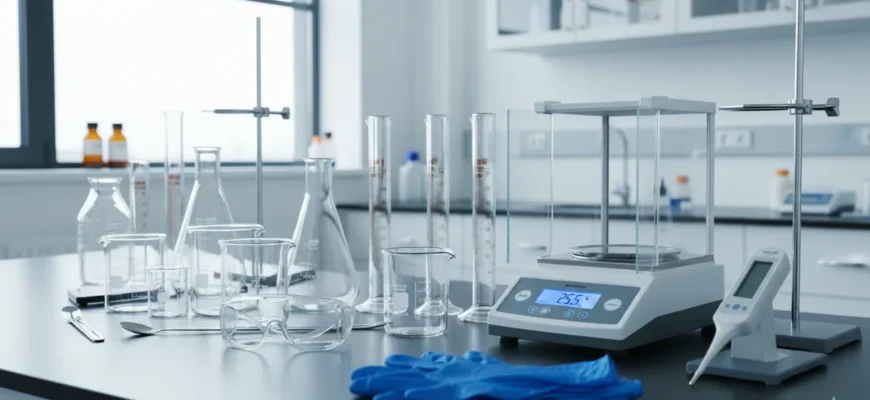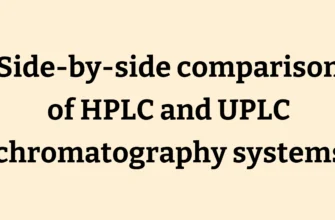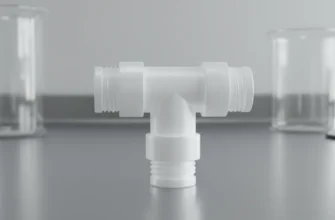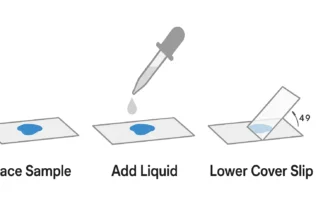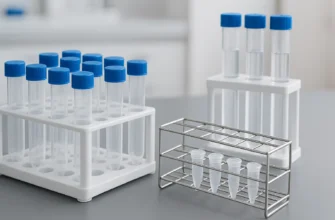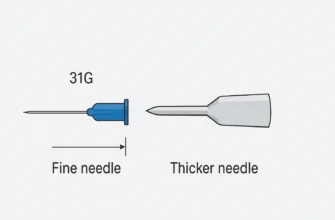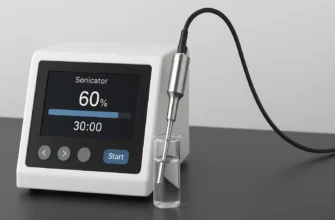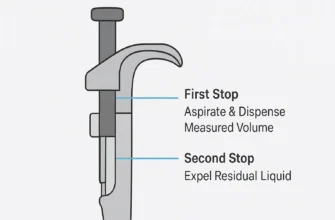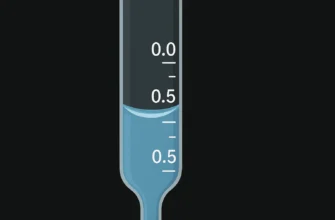Essential Science Lab Materials for Every Experiment – Updated 2025 Edition
Key Highlights
Safety remains the top priority in any science lab, now requiring comprehensive Chemical Hygiene Plans (CHP) under current OSHA standards. Core laboratory equipment includes borosilicate glassware such as beakers ($2-50 each), flasks ($3-70 each), and test tubes for handling liquids. Accurate measurements depend on digital instruments, which now dominate 40% of the market, including graduated cylinders ($5-60 each), analytical balances, and digital thermometers. Heating supplies, including Bunsen burners and hot plates, remain fundamental for many experiments. Consumable lab supplies like filter paper, litmus paper, and disposable pipettes are necessary for daily lab operations. Choosing the right materials depends on educational level, from middle school plastic equipment to advanced high school borosilicate glass instruments.
Introduction
Welcome to the exciting world of scientific discovery! A well-equipped science lab forms the foundation of hands-on learning and groundbreaking experiments. Whether you’re a student, teacher, or home experimenter, understanding essential lab equipment is crucial for safe and effective scientific work. The global scientific instruments market, valued at approximately $72-112 billion in 2024 and growing at 3.2-4.5% annually, reflects the increasing importance of quality laboratory equipment.
This comprehensive guide covers essential materials every lab needs to conduct experiments safely and effectively, incorporating the latest 2024-2025 standards and innovations. For physics experiments specifically, common supplies include measuring instruments like digital calipers and micrometers, digital stopwatches with 0.01-second accuracy, various sensors and meters, weights, springs, circuit components, and essential safety equipment.
Core Safety Materials Every Science Lab Needs
Before any experiment begins, safety is the most important consideration. Current OSHA Laboratory Standard (29 CFR 1910.1450) requires employers to designate a Chemical Hygiene Officer and maintain a written Chemical Hygiene Plan (CHP). This comprehensive approach to lab safety has evolved significantly, with modern laboratories requiring strict adherence to both federal regulations and international standards.
Laboratory personnel must receive training regarding safety protocols, chemical exposure monitoring, medical consultation procedures, and proper use of personal protective equipment. The hierarchy of safety controls prioritizes elimination, engineering controls, administrative controls, and finally personal protective equipment as the last line of defense.
Safety Goggles and Protective Eyewear
Your eyes are incredibly vulnerable in laboratory environments, making safety goggles one of the most critical safety products available. Modern safety goggles must meet specific standards: EN166 in Europe or ANSI Z87.1 in the United States. These standards ensure comprehensive protection from chemical splashes, fumes, and flying debris generated during experiments.
Unlike regular glasses, protective eyewear creates a complete seal around your eyes, offering comprehensive protection against accidental acid splashes and other corrosive substances. Current safety protocols require goggles to be worn at all times when experimentation with hazardous chemicals is being conducted.
Advanced protective eyewear now includes options for laser protection, UV light protection, and impact resistance, depending on specific laboratory applications. Always ensure your safety goggles fit properly and remain in good condition, as this simple step forms a core component of responsible scientific practice.
Lab Coats and Chemical-Resistant Aprons
Lab coats and chemical-resistant aprons serve as removable barriers between personnel and accidental spills or splashes. Current safety guidelines emphasize that lab coats should never be stored in offices or break rooms, as this practice spreads contaminants to other areas. High-quality lab coats are typically made from materials that provide splash protection while allowing for easy decontamination.
For experiments involving highly corrosive chemicals, specialized chemical-resistant aprons offer enhanced protection beyond standard lab coats. Modern protective garments include coveralls, face masks, shoe covers, caps and hoods, with material selection based on specific laboratory applications.
Professional lab coat usage reinforces the importance of safety and cleanliness in scientific work. Current recommendations require lab coats to be buttoned completely for maximum coverage and protection.
Chemical-Resistant Gloves
Chemical-resistant gloves are essential laboratory equipment for preventing direct skin contact with hazardous materials, acids, and other solutions. Modern gloves are manufactured from materials like nitrile, latex, neoprene, and PVC, each designed to withstand specific chemical exposures and provide varying levels of protection.
Selection of appropriate gloves depends on the specific chemicals being handled, as different materials offer different levels of protection against various substances. Nitrile gloves are particularly popular due to their chemical resistance and reduced allergy potential compared to latex alternatives.
Always inspect gloves for holes or tears before use, and remove them carefully after handling chemicals to avoid skin contamination. Proper disposal of used gloves is equally important for maintaining a safe laboratory environment for all personnel.
Fire Extinguishers, Blankets, and First-Aid Kits
Emergency preparedness requires accessible fire extinguishers, fire blankets, and fully stocked first-aid kits throughout the laboratory. Different types of fire extinguishers are used for different fire classes: Class B extinguishers for flammable liquids and Class C for electrical fires.
Fire blankets are useful for smothering small fires or wrapping around individuals whose clothing has caught fire. First-aid kits should be clearly marked, stored in accessible locations, and regularly checked to ensure full stocking with supplies for treating minor cuts, burns, and chemical exposures.
Modern emergency response equipment includes eye wash stations and safety showers, which are required by many current safety standards for laboratories handling chemicals. These emergency stations provide immediate decontamination capabilities for chemical exposures.
Essential Glassware for Experiments
Glassware serves as the workhorse of chemistry and biology laboratories, with beakers, test tubes, and flasks used in nearly every experiment. Most high-quality laboratory equipment is manufactured from borosilicate glass, which offers excellent thermal shock resistance and chemical corrosion resistance. Current market pricing ranges from $2-50 for beakers, $3-70 for flasks, and $5-60 for graduated cylinders, depending on size and quality specifications.
Borosilicate glass remains the standard material due to its ability to withstand repeated heating and cooling cycles while maintaining chemical compatibility with a wide range of substances. Understanding the specific function of each glassware type is essential for successful and accurate scientific work.
Beakers: Versatile Containers for Mixing
Beakers are among the most recognizable pieces of laboratory equipment, featuring cylindrical containers with flat bottoms and small spouts for controlled pouring. While available in both borosilicate glass and plastic versions, glass beakers are preferred for applications involving heat or chemical reactions.
Available in sizes ranging from 10 mL to several liters, beakers provide incredible versatility for stirring, mixing, and heating liquids. Although volume markings appear on the sides, these serve only for approximate measurements; precise volume work requires graduated cylinders or volumetric flasks.
Key features of modern beakers include wide openings for easy substance addition and stirring, flat bottoms for stability on hot plates or laboratory benches, and reinforced spouts for controlled liquid transfer.
Flasks: Erlenmeyer and Volumetric Options
Flasks represent essential laboratory equipment designed for specific experimental tasks. Erlenmeyer flasks feature conical shapes with flat bottoms and narrow necks, which help prevent splashes while swirling mixtures and reduce evaporative losses during reactions.
Volumetric flasks are calibrated to contain precise liquid volumes at specific temperatures, making them indispensable for preparing standard solutions where accuracy is critical. Round-bottom flasks, designed for uniform heating, are commonly used in distillation and other heating applications requiring even temperature distribution.
Modern flask varieties and their applications include Erlenmeyer flasks for mixing, storing, and heating solutions; volumetric flasks for creating solutions of precise concentration; and specialized flasks like Schlenk flasks for air-sensitive chemistry applications.
Test Tubes and Racks for Sample Handling
Test tubes remain among the most common laboratory equipment pieces, perfect for handling small quantities of liquid or solid samples. These cylindrical containers feature narrow openings and rounded bottoms, making them ideal for observing chemical reactions and mixing reagents on small scales.
Proper sample handling requires organization through test tube racks, which hold multiple tubes upright while preventing spills and allowing efficient management of numerous samples simultaneously. Modern test tube racks are essential for maintaining experimental organization, especially during qualitative analysis involving many samples.
Safety considerations for test tube use include using racks for stability and organization, never pointing heated test tubes toward yourself or others, and employing test tube holders or tongs when heating to prevent burns.
Measurement Tools for Accurate Results
Scientific research depends on precise measurements, making accurate measurement tools fundamental to reliable data collection. Unlike common measuring devices, laboratory instruments like graduated cylinders are designed for high accuracy and precision in scientific applications.
The precision measuring instruments market, valued at approximately $12.5 billion in 2024 and growing at 4.5% CAGR, reflects the increasing demand for accuracy across scientific fields. Digital measuring instruments now dominate the market with over 40% market share due to their ease of use, real-time data output, and integration capabilities.
Graduated Cylinders and Measuring Devices
Graduated cylinders serve as essential laboratory equipment for accurate liquid volume measurements, featuring tall, cylindrical containers with precise graduation marks along their sides. These instruments provide significantly higher accuracy than beakers or flask markings, making them indispensable for quantitative experimental work.
Proper graduated cylinder technique requires reading measurements at eye level from the bottom of the meniscus (the curve at the liquid’s surface). Modern graduated cylinders are available in various sizes from 10 mL to 2,000 mL, allowing selection of appropriate instruments for specific experimental needs.
For optimal accuracy with graduated cylinders, choose sizes appropriate for the volume being measured, place cylinders on flat, stable surfaces, and read measurements at eye level from the meniscus bottom for precise results.
Balances and Scales for Precise Weighing
Analytical balances and precision scales are critical laboratory instruments for accurate mass measurements in chemical reactions where substance quantities are crucial. Modern analytical balances can measure to several decimal places with high precision, often using electronic sensors and digital displays for enhanced accuracy.
Different balance types serve various applications: top-loading balances for general use and analytical balances for high-precision work requiring exceptional accuracy. Proper balance use includes placing instruments on stable surfaces away from drafts and using weighing dishes or papers to prevent chemical contamination.
Essential balance techniques include always “taring” or zeroing the balance with empty containers before adding substances, avoiding table vibrations during measurements, and cleaning up spills immediately to protect sensitive instruments.
Thermometers and Temperature Probes
Temperature measurement is critical in countless scientific experiments, from biology to chemistry applications. Digital thermometers and temperature probes now offer faster, more precise readings compared to traditional mercury or alcohol thermometers, with many featuring data logging capabilities for continuous monitoring.
Modern temperature measurement devices include waterproof digital thermometers with stainless steel probes (range -50 to 150°C), traditional spirit-filled thermometers for basic applications, and specialized clinical and soil thermometers for specific applications. Advanced temperature sensors like thermocouples, RTDs, and thermistors provide highly sensitive measurements for research applications.
Proper temperature measurement techniques include ensuring complete immersion of thermometer bulbs or probes in substances, allowing adequate time for readings to stabilize, and using clamps to secure thermometers safely during extended monitoring periods.
Heating and Energy Supplies in the Lab
Many chemical reactions require controlled heating to initiate or maintain optimal reaction rates. Laboratory heating equipment must provide safe, reliable heat sources while maintaining precise temperature control for experimental success.
Modern laboratories utilize both traditional Bunsen burners for high-temperature applications and electric hot plates for safer, more controlled heating applications. Safety considerations require proper ventilation, fire suppression equipment, and heat-resistant handling tools for all high-temperature work.
Bunsen Burners and Hot Plates
Bunsen burners provide adjustable open flames for heating, sterilization, and combustion reactions. By controlling air and gas flow, users can adjust flame temperature and characteristics, making Bunsen burners versatile tools for various high-temperature applications.
Hot plates offer flameless heating with flat, uniformly heated surfaces suitable for beakers and flasks. Many modern hot plates include integrated magnetic stirrers for simultaneous heating and mixing, plus digital temperature controls for precise heat management.
Selection between heating sources depends on application requirements: Bunsen burners for achieving very high temperatures quickly, and hot plates for safer heating with flammable liquids and more uniform temperature distribution.
Heat-Resistant Tongs and Crucibles
High-temperature work requires specialized heat-resistant equipment capable of withstanding extreme temperatures. Crucibles made from porcelain or metal can tolerate much higher temperatures than standard glassware, making them essential for processes like ashing organic matter or melting metals.
Heat-resistant tongs and forceps enable safe handling of hot crucibles, beakers, and flasks without risk of burns. These specialized tools feature insulated grips and secure jaw designs for confident handling of heated materials.
Essential high-temperature tools include crucibles made of porcelain or metal for extreme heat applications, crucible tongs designed to securely hold and move hot crucibles, and beaker tongs with rubberized jaws for safely gripping hot glassware.
Insulation Mats and Tripods
Safe heating requires proper support and protection equipment. Tripods provide stable platforms for holding flasks or beakers over Bunsen burner flames, ensuring secure positioning and proper heat distribution during heating operations.
Wire gauze placed on tripods distributes Bunsen burner heat evenly, reducing thermal shock risk and preventing glassware cracking. Insulation mats protect laboratory bench surfaces from heat damage while providing safe areas for placing hot equipment.
Essential heating support equipment includes tripods for stable glassware support over flames, wire gauze for even heat distribution and thermal shock prevention, and ceramic-based insulation mats for protecting work surfaces from heat damage.
Consumable and Disposable Lab Supplies
Beyond reusable equipment, laboratories depend on steady supplies of consumable and disposable materials. These items are used once and discarded, including filter paper, litmus paper, disposable pipettes, and various testing materials essential for daily laboratory operations.
The consumables market continues growing as laboratories emphasize safety, contamination prevention, and operational efficiency. For educational laboratories, maintaining adequate consumable inventory prevents experimental interruptions and ensures smooth daily activities.
Filter Paper and Litmus Paper
Filter paper serves as semi-permeable barriers used with funnels to separate solid particles from liquids. Modern filter paper comes in various grades and pore sizes for different separation applications, from coarse filtering to fine particle removal.
Litmus paper provides quick qualitative pH testing, changing colors to indicate acidic or basic conditions. While less precise than electronic pH meters, litmus paper offers convenient, immediate chemical property assessment for many educational and screening applications.
Common paper-based consumables include filter paper for solid-liquid separations, litmus paper for rapid pH testing, and weighing paper for protecting analytical balances from chemical contamination.
Pipettes, Droppers, and Microtubes
Accurate liquid transfer requires specialized tools for different volume ranges and precision requirements. Disposable plastic pipettes and glass droppers excel at transferring small liquid quantities where high precision isn’t critical, while volumetric and micropipettes provide calibrated accuracy for precise measurements.
Modern laboratories increasingly use disposable sterile pipettes to prevent cross-contamination between samples. These single-use instruments eliminate cleaning requirements while ensuring sample purity in sensitive applications.
Liquid handling tools include transfer pipettes and droppers for small, approximate liquid volumes; calibrated pipettes for precise volume measurements; and microtubes for storing and processing small liquid samples in biological applications.
Petri Dishes and Sample Containers
Microbiological work requires specialized containers for growing and observing microorganisms. Petri dishes, typically filled with nutrient-rich agar gel, provide controlled environments for bacterial, yeast, and other biological cultures.
Proper sample storage requires various container types, from small vials to larger jars, for safely storing chemicals, solutions, and biological specimens. Clear labeling of all containers is fundamental laboratory practice for preventing dangerous mix-ups and ensuring experimental accuracy.
Essential containers for biological work include petri dishes for microorganism culture, sample containers and vials for material storage, and parafilm for sealing containers like petri dishes and flasks to prevent contamination.
Science Lab Materials for Various Educational Levels
Educational laboratories require different equipment based on student age and curriculum complexity. Middle school science emphasizes safety, basic concepts, and observational skills, while high school laboratories require more sophisticated instruments for quantitative and complex experimental work.
The educational science equipment market continues evolving, with digital instruments gaining prominence and budget-friendly options making quality science education more accessible. Understanding these differences helps educators select appropriate materials supporting curriculum goals and student development.
Choosing Supplies for Middle School and High School Labs
Middle school laboratories prioritize safety and durability, often favoring plastic beakers and graduated cylinders over glass to minimize breakage risk. Educational focus centers on introducing basic laboratory procedures and fundamental scientific concepts through hands-on activities.
High school laboratories require equipment enabling precise, complex experiments, including wider varieties of borosilicate glassware, analytical balances, and potentially advanced instruments like spectrophotometers. The goal shifts toward preparing students for college-level scientific work and developing quantitative analysis skills.
| Equipment Category | Middle School | High School |
|---|---|---|
| Glassware | Primarily plastic or durable glass | Wide range of borosilicate glass including volumetric flasks |
| Measurement | Basic balances, plastic graduated cylinders | Analytical balances, glass graduated cylinders, burettes |
| Heating | Hot plates preferred for safety | Bunsen burners and hot plates |
| Safety | Goggles, aprons, basic first aid | Goggles, lab coats, fire extinguishers, fume hoods |
Selection Tips for Home and Classroom Science Experiments
Home science experiments can utilize basic equipment kits including essential tools like beakers, test tubes, simple scales, and safety goggles. Many household items can be repurposed for simple experiments, making home science both accessible and educational.
Budget-friendly science kits under ₹500 ($6 USD) now offer excellent educational value, including crystal growing kits (₹200-400), basic chemistry sets (₹300-500), electronics starter kits (₹250-450), and physics demonstration kits (₹300-500). These affordable options democratize science education while maintaining educational quality.
Essential home science selection tips include starting with safety gear and basic glassware, prioritizing safety equipment even for simple experiments, and considering pre-assembled educational kits for cost-effective, comprehensive learning experiences.
Current Market Trends and Innovations
The scientific instruments industry, valued at $72-112 billion in 2024, continues evolving with digital integration, sustainability focus, and precision enhancement. Digital measuring instruments dominate with 40%+ market share, while smart measuring technologies incorporating IoT and wireless connectivity grow at 9.5% CAGR.
Current trends emphasize sustainability through increased reusable equipment adoption, digital instrument integration for enhanced data management, and miniaturized devices for specialized applications. These innovations reflect growing demands for precision, automation, and operational efficiency across scientific fields.
Conclusion
Having appropriate science laboratory materials remains crucial for conducting safe, effective experiments across all educational levels. From essential safety gear like goggles and lab coats to versatile glassware and precise measurement tools, each component plays a significant role in enhancing learning experiences and ensuring accurate results.
Whether you’re an educator establishing classroom laboratories or a student preparing for home experiments, selecting quality materials that meet current safety standards promotes both effective learning and safety prioritization. The evolving scientific instruments market, with its emphasis on digital integration and sustainability, continues making quality science education more accessible and effective.
Investment in appropriate laboratory materials, combined with proper safety protocols and structured educational approaches, creates engaging environments where scientific curiosity can flourish safely and productively.
Frequently Asked Questions
Where can I buy reliable science lab materials in the United States?
You can purchase reliable science lab equipment from specialized educational suppliers like Fisher Scientific, Lab-Aids, and Bio-Rad, which offer curriculum-aligned materials specifically designed for educational institutions. Online scientific supply companies provide extensive selections with positive reviews, catering to both educational institutions and individual buyers. When purchasing equipment, always verify that suppliers meet current safety standards for laboratory settings.
What are the most important consumable supplies to stock in a school lab?
Essential consumables for school laboratories include filter paper, litmus paper, disposable pipettes, nitrile gloves, and cleaning supplies. These items support a wide variety of experiments and are fundamental for daily laboratory activities. Maintaining adequate stock of these basic consumables prevents experimental interruptions and ensures smooth educational operations.
Are there reputable sources for affordable or secondhand science equipment?
Yes, affordable science equipment can be found from educational surplus suppliers, refurbished equipment dealers, and university surplus departments. Online marketplaces also offer used laboratory equipment from reputable sources. When purchasing used equipment, always verify proper working condition and compliance with current safety protocols before use in educational settings.

